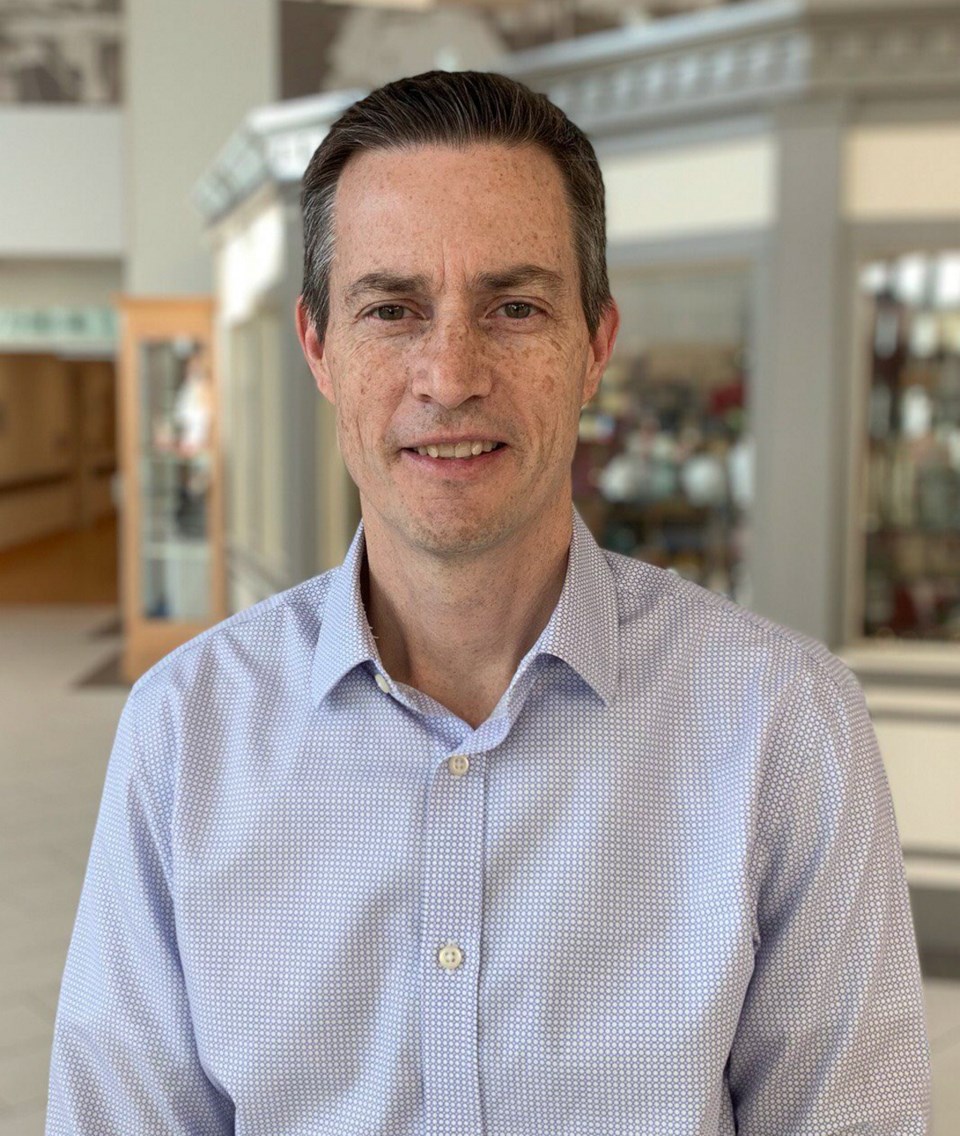This is one of a series of stories about the Victoria Hospitals Foundation’s You Are Vital campaign.
In some ways, it’s fortunate that Pete Kenyon caught that cold back in 2008; it might just have saved his life.
The 74-year-old retired mill worker, who enjoyed travelling, figured he had picked up a bug on an airplane. But when two doses of antibiotics failed to clear the infection, his doctor sent him for a CT scan.
One test led to another and eventually alerted Kenyon to the fact that he had cancerous growths in his left lung.
Enter Dr. John Samphire, a thoracic surgeon at Royal Jubilee Hospital and a key member of its Centre for Excellence in Thoracic Surgery — the only such service on Vancouver Island.
Thoracic surgeons specialize in treating the lungs, trachea and esophagus and other organs in the chest, which is why Kenyon’s case ended up on Samphire’s desk.
“At that time, there was just two of us that practised on the Island,” Samphire said in an interview. “And [Kenyon] came with a lung cancer and was staged and we operated on him.”
The surgery removed about 50 per cent of Kenyon’s left lung and he underwent weeks of chemotherapy at Cowichan District Hospital.
“He did very well from that and we followed him for a number of years,” Samphire said.
Kenyon was unavailable for an interview, but he provided details of his experience to the Victoria Hospitals Foundation, which is highlighting his story as part of its latest fundraising campaign.
The foundation says Kenyon was “on edge” after the surgery, but eventually regained his strength and resumed golfing and gardening. He remained cancer-free for the next eight years.
Then, in 2016, he disclosed to his family doctor on a regular visit that he had been having night sweats for the past three months. He was sent for another CT scan, and a tumour was discovered in the same lung.
Kenyon, who was 82 by then, faced the prospect of further surgery. In the past, surgeons were less likely to operate on people at that age, but medical advances have changed all that.
This time, Samphire was able to use newer technology such as the internal thoracic video system, which allows surgeons to operate through a tiny “keyhole” in a patient.
“Although we’ve been able to do that for a while, the equipment that we’ve used for the longest time has been relatively limited in terms of its visualization,” Samphire explained.
“We’re looking through a little hole in a device that’s about eight inches long.
“Now we’ve translated that to using the screens. Now, on large TV or large screens, we can see all the anatomy. It makes it a lot safer for the patient and it makes it much more of a thorough process.”
Of particular benefit for patients, such minimally invasive surgeries eliminate the need for large, open incisions in the chest.
“Chest incisions are amongst the sorest incisions that you can get, and so to be able to get in there with small incisions, use the cameras, sort of duck in and duck out if you will, is a huge advantage to a patient,” Samphire said.
The benefits for Kenyon were immediately obvious.
“At 82, for him to have a big incision again would have been potentially far more problematic,” Samphire said. “So to see him at four weeks or six weeks, bouncing back, almost back to normal by then, is pretty cool.”
It’s one of the reasons Samphire is speaking out in support of the Victoria Hospitals Foundation’s You Are Vital campaign, which is aiming to raise $3.5 million for new equipment, including a new internal thoracic video system.
Samphire said such equipment is vital to the work that he and his colleagues do. “We do, I suspect, 90 per cent of our surgery now with cameras and scopes.
“I think without it, we would be doing things all in our old ways, which would be manageable, but clearly without all the benefits that we’ve seen develop.”
Donations through the hospitals foundation make a huge difference, he said.
“It’s critical because health care is a challenging thing. It’s a complicated process that requires a lot of money.
“We don’t always get the equipment as fast as we’d like, and these are some opportunities that let us get up to the standards and exceed the standards for care often much more quickly.
“So we are really dependent on people’s generosity to provide the best care possible.”
Kenyon is living proof of the impact from that care. The hospitals foundation says that two years after his second surgery, he and his wife, Doris, continue to spend time with their three children, eight grandchildren and five — soon to be six — great-grandchildren.
Samphire says he takes satisfaction from many aspects of his job.
“But, at the end of the day, it’s how that other person does,” he says. “What’s kind of neat about a story about a guy like Pete is that you get to know him for a long time, because we see him every four months or so for many years.
“You hear about the holidays, you hear about the family, you hear about all the stories.”
Samphire said he was always struck by the warmth and positive attitude that Pete and Doris displayed.
“So to see somebody like Pete be alive and doing well, so long after his first surgery and again after his second, is pretty impressive.
“It’s so rewarding and that’s what it’s all about.”
The series
- Trip to doctor for 'cold' led to discovery of cancer in lung
- Putting moms and newborns first at Victoria General Hospital
- When the doctor becomes the patient
- Royal Jubilee lung tests prove a lifesaver for asthma sufferer
- Artist Robert Bateman takes hospital’s care to heart
- Heart attack a timely wake-up call



